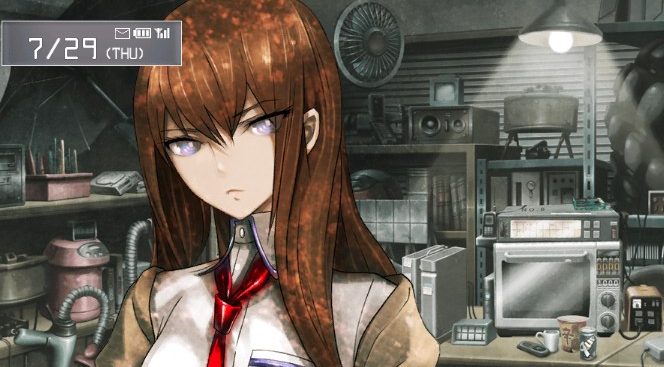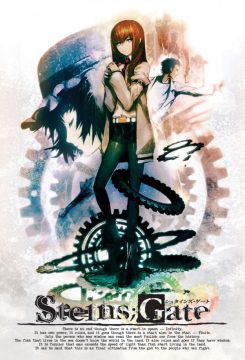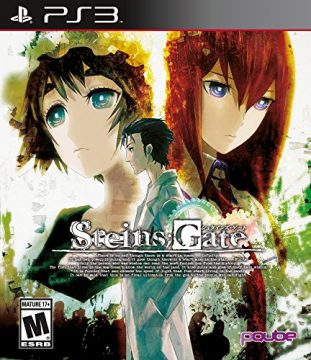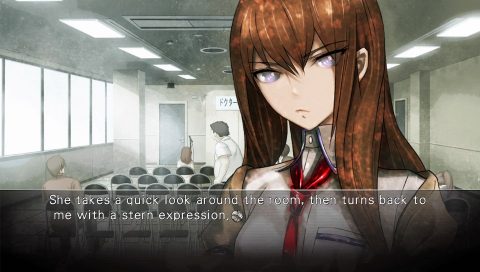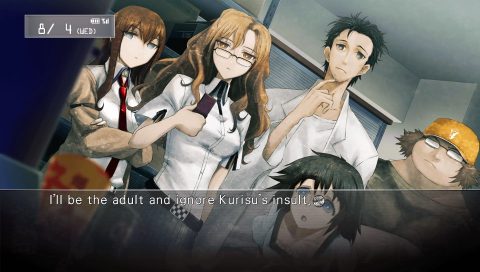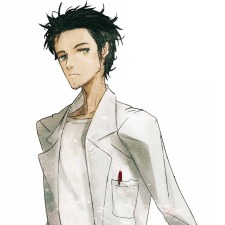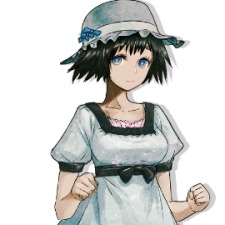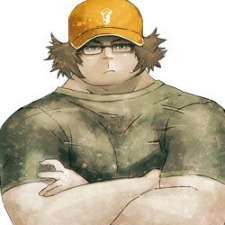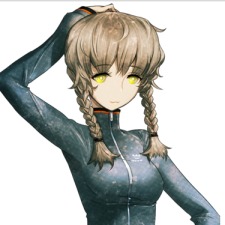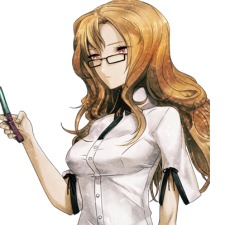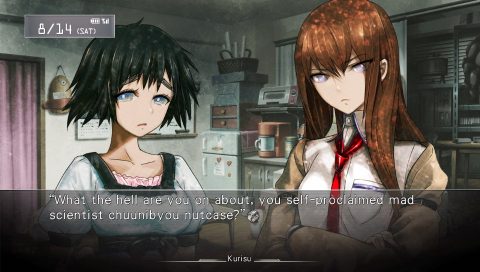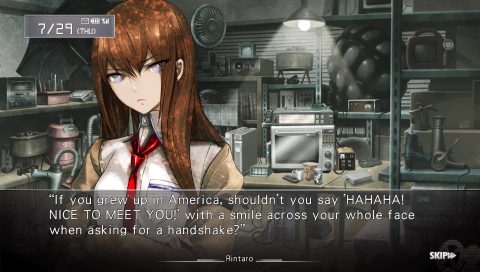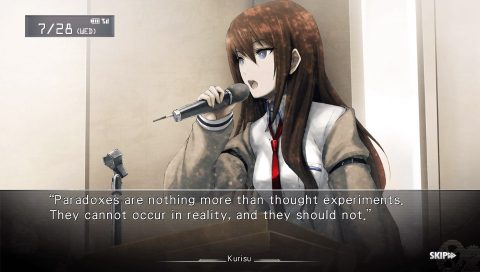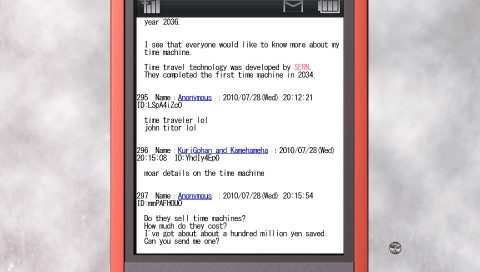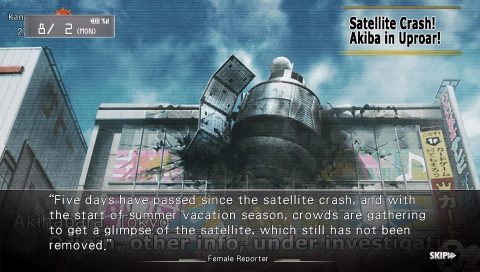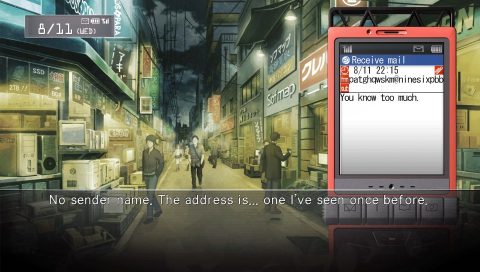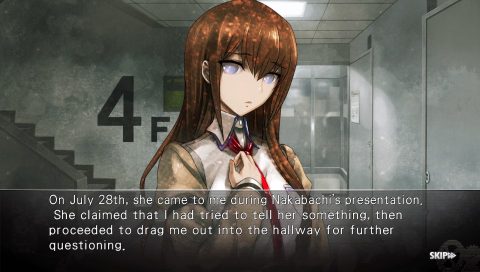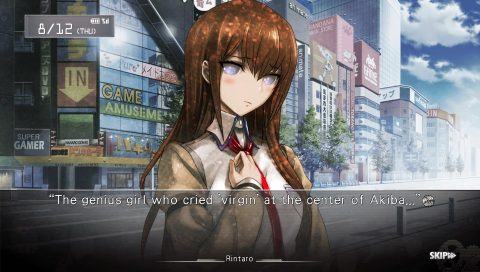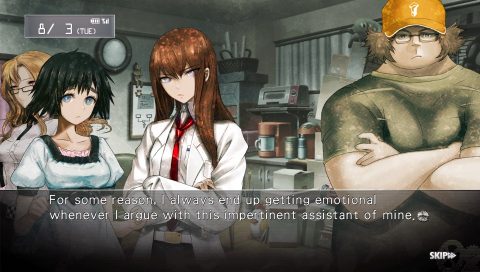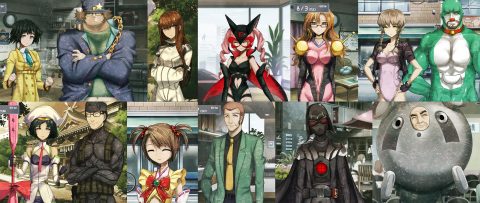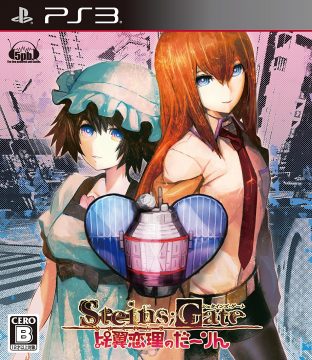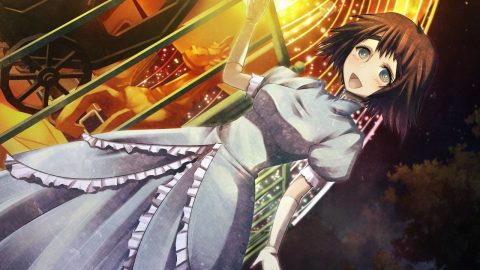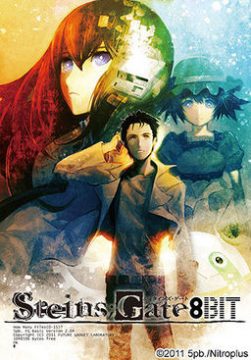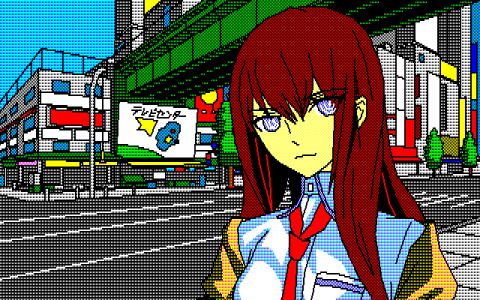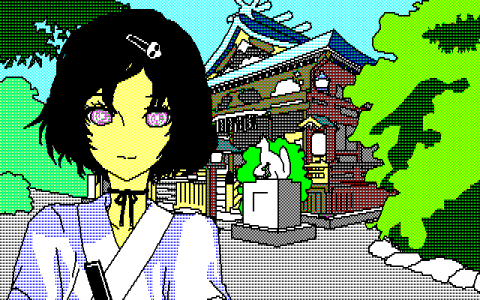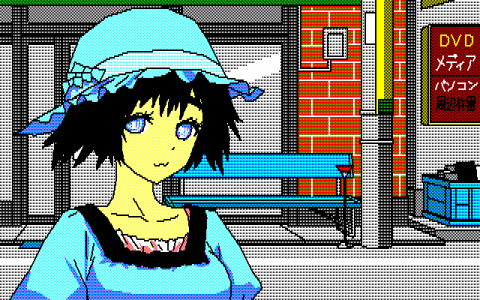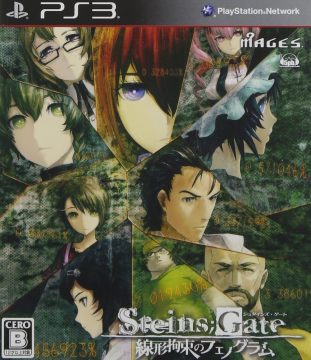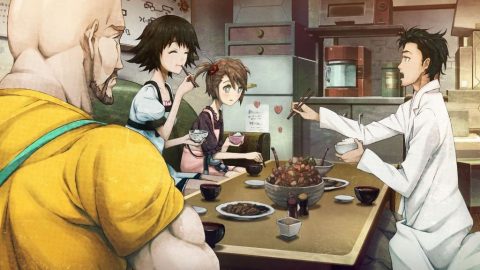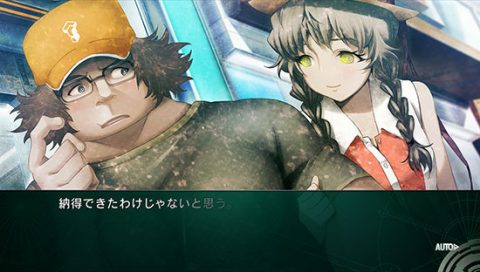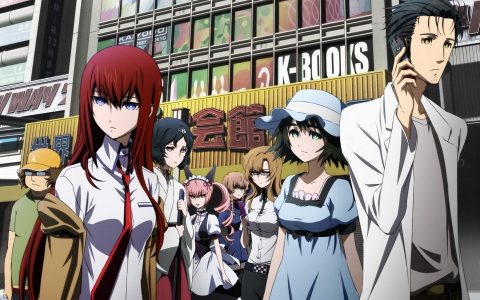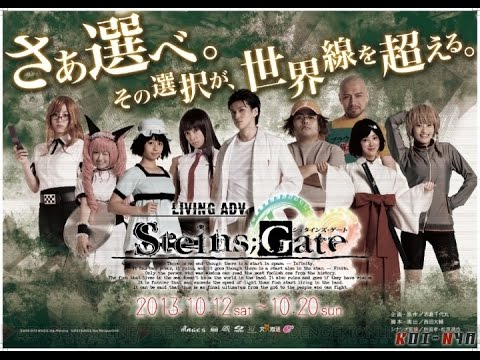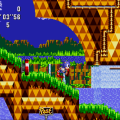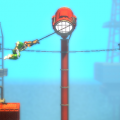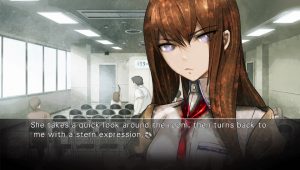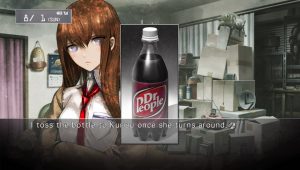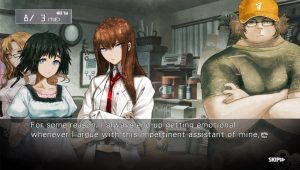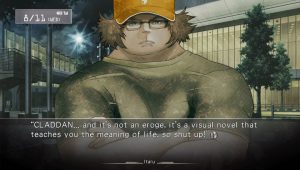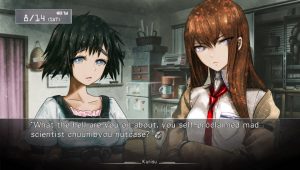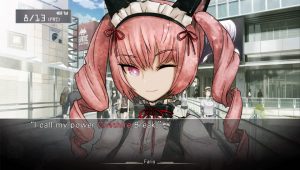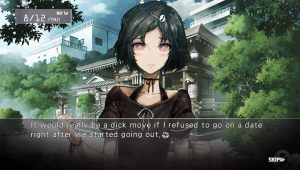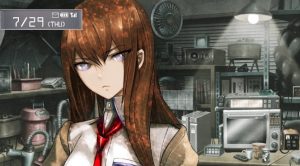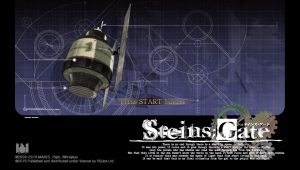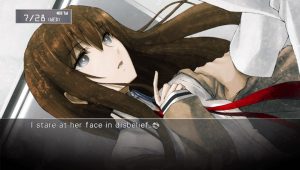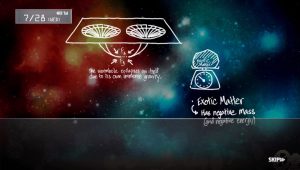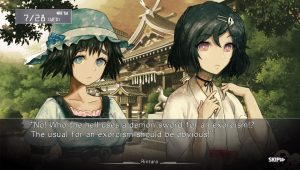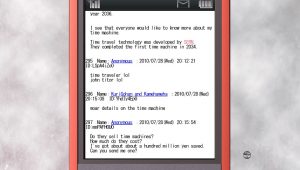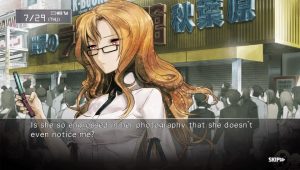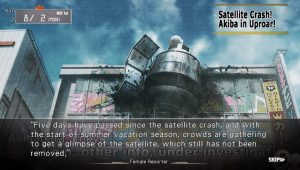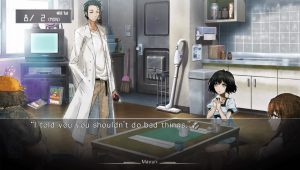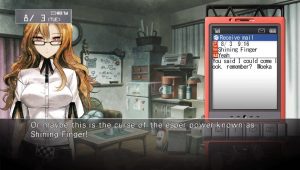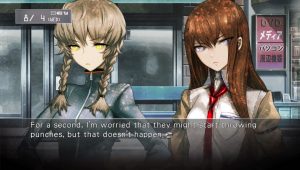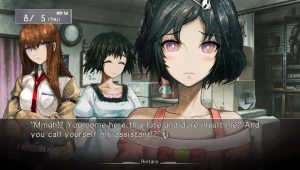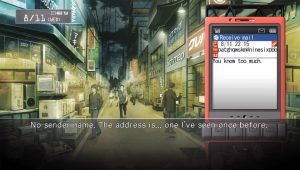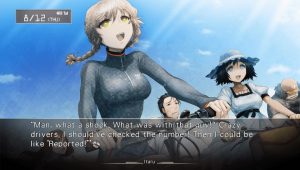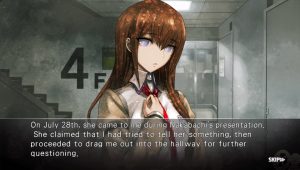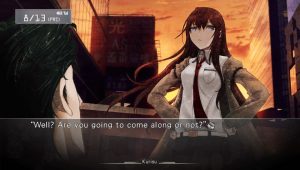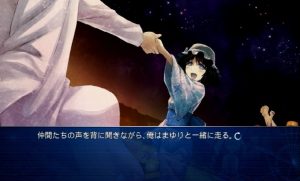Steins;Gate is a visual novel that was originally released in Japan in 2009 on the Xbox 360, then ported to practically every other modern platform after that. It was officially released in English on the PC in 2014, then on the PS3 and Vita in 2015. It’s widely praised as not only one of the best of its genre, but also one of the best time travel stories ever written. It’s part of the 5pb and Nitroplus’ series of “Science Adventures”, a (very) loosely connected series that includes Chaos;Head, Chaos;Child and Robotics;Notes, all made distinctive by that absurd semi-colon between the title. They share some minor references between them, indicating they take place in the same universe, but otherwise are unrelated. All of these were written, either in whole or in part, by Naotaka Hayashi, and previously worked on KID’s visual novels like Remember 11.
Usually with these types of games, people will insist for absolutely no spoilers, and go in blind. That’s really not a good idea for Steins;Gate. The game has a very, VERY slow beginning and you need to know what you’re getting into and to come to terms with it. Major spoilers will be avoided, though.
The story focuses on a group of teenagers living in Akihabara, who mess around and create mostly useless gadgets, largely based around whatever anime or video game they were watching/playing at the time. But many great inventions were created by accident (see: soda, microwaves, etc.) and by sheer happenstance, one of them creates a microwave (called a PhoneWave) that can send text messages back in time.
Characters
Rintarou Okabe
An eighteen year old college student and leader of the Future Gadget Laboratory. He refers to himself as Hyoouin Kyouma, a made-up name cobbled together from various kanji that sorta translates to “Phoenix temple, evil truth”; it’s one of those names that might sound cool as a video game character but sounds ridiculous in real life. Similarly, he fashions himself as a super smart guy on the edge of uncovering a massive conspiracy…but to most regular people, he comes off as an idiot. He’s not actually conspiracy theorist, but it’s rather just a role that he plays for fun.
Kurisu Makise
A brilliant 18-year old neuroscientist, who grew up in the United States but is visiting Japan for a seminar. She’s quite brilliant, having knowledge in multiple disciplines, and is one of the main driving factors in getting the crew’s time machine to work properly. Her love of science is what makes her tolerate the rest of the Future Gadget Laboratory members, who tend to get on her nerves with their general fooling around. In spite of her confidence, she’s also kind of a nerd, and secretly trolls on @channel (the in-game version of 2channel), though she hates to admit it publicly.
Mayuri Shiina
Okabe’s childhood friend and second member of the Future Gadget Laboratory. She doesn’t have any computer or science skills – and is often so ditzy that it’s a wonder she can function in human society – but remains faithful to her friends in spite of her never knowing what they’re talking about. She refers to herself as Okabe’s “hostage”, and is one of the only people that not only tolerates Okabe’s chuunibyou nonsense but actually likes it. She also likes to work on cosplay outfits, so she’s not entirely out of place in the Akihabara setting.
Itaru “Daru” Hashida
Okabe’s longtime friend, who is technically a genius hacker but tends to spend his days obsessing over E-games. He’s a stereotypical otaku – disheveled, obese, and convinced of the superiority of 2D girls over 3D. He also can’t go more than few minutes without making perverted comments. In spite of his shtick, it’s his tinkering around that causes the Future Gadget Laboratory to begin their experiments in time travel.
Luka Urushibara
The son of a local shrine keeper, Luca is often mistaken for a girl, partially due to his femininte features, and also that his father insists that he dresses like a miko. He barely has any confidence and is incredibly uncomfortable in his own skin, despite the rest of the characters (male and female) remarking on his beauty. He befriends Okabe and goes along with his games, fashioning himself as something like his disciple.
Faris Nyan Nyan
A cosplayer who also works at one of Akihabara’s many maid cafes. She’s incredibly popular, not only for her fashion sense, but for her skill in Rainet Access Battlers, a card game similar to Yu-Gi-Oh. Like Okabe, she also has a fake persona, and her ridiculousness is often a fair match for his. As her outfit and name suggests, she talks like a cat.
Suzuha Amane
A young woman who gets a part-time job at the television repair ship beneath the Future Gadget Laboratory. She’s a little suspicious, if mostly because it’s weird that a teenager would have any interest in CRT TVs, but also because her pop culture references are a little outdated. She enjoys tuning up her bike and is quite the fighter, if provoked.
Moeka Kiryuu
An extremely quiet young woman who works for a local tech magazine. She can barely handle one-on-one conversation, and prefers to talk entirely through text messages, even when face to face. Due to her incredible speed in typing on her cell phone, Okabe calls her Shining Finger, a reference to a special move from G Gundam.
The main thing you need to know about Steins;Gate is that the cast of the Future Gadget Laboratory, as they call themselves, are very…unusual. The protagonist is Rintarou Okabe, who is a self-proclaimed mad scientist, rambles about taking over the world, makes paranoid phone calls (to himself), and is basically just a crazy idiot. He is what’s referred to as a “chuunibyou” or “second year middle school syndrome”, where people take on a dramatic, juvenile persona, basically talking as if they were a video game.
There’s a lot of this “internet nerd” reference humor that begins the story (especially since it takes place in Akihabara), though most of the more obscure references are explained in an in-game dictionary. Some of them are well known though – the time traveling e-mails are called “D-mail”, or “DeLorean Mail”, for obvious reasons. It also weaves in the modern legend of John Titor, the “real life” time traveler who popped up on Internet message boards around the year 2000, proclaiming to have traveled from a dystopian future, in order to find an ancient IBM computer from the 70s. This computer, called the IBN 5100 in-game (referring to the real IBM 5100) is of extreme importance to the game’s story.
Okabe presents himself as crazy, and it’s pretty alienating at the beginning, since the entire game is told from his perspective. But most of his friends are just as weird, being incarnations of various anime archetypes. His childhood friend, Mayuri, is supposed to be the walking incarnation of moe, but she ends up coming off more like a five year kid than a high schooler…and not a particularly bright five year old at that. Okabe’s miko friend Luka is so fragile that looking at him wrong seems to send him emotionally to pieces. Almost every main character has a really exaggerated persona.
This is an issue because, as mentioned previously, the story takes a really long time to get going. And during this period, the characters have the same tedious conversations. Okabe cackles about something. Makise Kurisu, an actual genius scientist who gets swept up in all of this, acts all tsundere towards Okabe and his hacker buddy Daru, who in-between serving up his computer skills, mostly just drops dirty jokes. Mayuri says something dim-witted. And so it goes over and over, as the Future Gadget Lab tests the boundaries of what their time machine can do.
At this point, pretty much everyone who tries to play the game runs into the same problem. “What am I doing? Where is this going? Why should I care about these weirdos? Why is this game so widely praised?” This is something everyone goes through, but have patience, because it gets really damn good.
Eventually, the groups’ casual mucking around with time travel screws up really, really badly, in ways that not only ruin their lives but change the fate of the entire course of the planet. You will know when this happens, because the story changes tone from a goofy slice-of-life visual novel, to something far, far more dramatic.
The key to any good science fiction story isn’t just with the “sci-fi” aspect, but with the “human” aspect. Steins;Gate does both remarkably well. Even in the slower early parts of the game, there’s a lot of care, especially narrated by Kurisu, to at least kind of justify the principles of time travel. For example – there’s a major issue of not just time but space. The Earth is constantly spinning and constantly in orbit, so even if you were to travel back in time just ten seconds ago, you would end up in a different spot, unless you were to adjust for that movement. Eventually, the Future Gadget Lab sort of creates their own time travel by compressing their memories and sending them to a past self, transferring consciousness rather than physically moving through time, and how they do this is insanely cool.
But the concept of time travel is also connected to the more nebulous metaphysical concept of “fate”, and this is what Steins;Gate does differently than most others. The central idea is that while you can make small changes in the past, the unseen forces of the universe will generally ensure that nothing too drastic can occur. These are referred to as “wordlines”, which have slight divergences from each other. What is “drastic” isn’t strictly defined and depends on the event. An early example in the game is Okabe trying to send winning lottery numbers to an earlier self…but fate ends up screwing something up and instead of getting a large payout he only gets a tiny one.
The only way to make major changes in a worldline is to change the outcome of a major world spanning event – these are referred to as things like wars and terrorist attacks. If you can prevent these from happening, then maybe, maybe, you can make other changes. This can include someone’s death. If someone is fated to die, they will die. The only way to change that is by making a change in one of those world-spanning events.
It’s a concept that’s kinda vague and confusing – a lot of it is chalked up to the chaotic nature of the butterfly effect, and you just have to roll with it. Even in-universe, the characters that have knowledge of time travel aren’t entirely sure of specifics. But it’s a really interesting concept, and the story adheres to its own internal logic very closely. And it’s interesting to think about it in its own right. For example, using a popular example, it would be impossible to kill Adolf Hitler to stop World War II – the world just won’t allow it. But if you were to create another scenario that would prevent World War II from a broader perspective – like preventing his rise to power – then it could make a drastic shift in the worldline, that it might be possible for him to be killed (or at least change the date of his death).
In spite of the somewhat weighty concepts and occasionally confusing technobabble, the story remains relatively straightforward. There are several different worldlines which Okabe travels between (indicated via a “divergence meter” on a digital clock-like device), but his travel through these different periods are “nested” in a way that keeps it from becoming too haphazard. The text is usually pretty good about establishing where Okabe is at at given time, since each worldline is usually mostly the same, barring a handful of major changes, like the world where Akihabara is bereft of maid cafes and anime influences, and instead remaining a computer hardware paradise.
So that’s the “sci-fi” part. The “human” part has to do with all of the things Okabe needs to do in order to set things right. During their tests, most of his friends made some change to the past, in order to fix something they didn’t like about their lives. Without getting into specifics, Okabe needs to travel back and undo all of them. In the process, you learn about the reasons they wanted to fix things, which are usually heart-breaking. It really does a lot to flesh out the secondary cast, even the ones that seem a little off-putting otherwise.
This is also where the storyline branching comes in. Even though the main plot involves undoing all of the character’s worldline changes, you can opt to keep living in their worldline, and see how things play out. Most of these are, again, pretty touching, even if they’re not the “right” ending. Through this Okabe becomes a much more compelling character. He starts the game as a juvenile, insufferable nitwit, but when things go down he really grows up and rises the meet the demands the world plays on him. It’s a great character arc, and one that further continues in its sequel Steins;Gate 0.
There is some romantic element involved in the story – most of the supporting cast are women, after all – and to an extent, the different endings do a feel a bit like “pick your waifu”. But it evolves naturally, and it can also change depending on how you choose through the story, particularly how Okabe feels about Mayuri and Kurisu.
This is important to the core of the story, because Kurisu is also the strongest character in the game. At the beginning, like the rest of the cast, she’s an anime stereotype, taking on the role of a typical tsundere. But where this role is usually just an arbitrary designation in order to fulfill a stock character type, it makes sense within the story – Kurisu speaks disdainfully to Okabe and Daru because they are immature jerks, and they deserve any tough lashings they get. And ultimately, despite her high class, super intelligent demeanor, she’s still a socially awkward nerd like most of the rest of the Future Gadget Laboratory crew. The way that both she and Okabe come out of their respective shells is extremely well done…even if, like the rest of the story, it takes quite a while for the wheels to start spinning.
The artwork is uniformly fantastic. The character designs were illustrated by huke, who at that time was mostly known for his work on Black Rock Shooter. They’re very distinct, particular with the ways that characters’ hair and clothes are textured, and make it stand out from most other visual novels, even the other Science Adventure games. The music is by Takeshi Abo, who has a long history working on visual novels, including Memories Off and Ever 17. Each of the tracks can be can be classified as “goofy/laid-back”, “serious exposition”, “science”, “conspiracy”, “action”, and “tragic”, and they’re all excellent. There are also a number of retro PC-like FM synth tunes that you can use to customize your cellphone with, most of which sound like they came right out of a late-80s Falcom game.
Beyond the pacing issues, the biggest issue with Steins;Gate is that the path to unlock the “true” ending is basically impossible to reach without using a guide. Steins;Gate is a “pure” visual novel (as compared to games like Ace Attorneyor Danganronpa), there’s almost no real “gameplay”, and just all reading. Since the PhoneWave is activated via a cell phone, it becomes your main conduit to determine story branches. Most of these are trivial interactions with the other characters, although it can majorly affect the plot at certain points.
However, in order to reach the “true ending”, you need to answer certain text messages in very specific ways, and the story really doesn’t give any feedback as to whether you’ve given the “correct” answer. Going back through the game to answer them correctly is trivial thanks to the speed-up function, which zooms through the game and only pauses at points where you make vital decisions, but it’s still needlessly obtuse. And the “true” ending isn’t just a minor scene, it’s a whole extra chapter that resolves most of the games’ plot threads. It’s absolutely essential to view in order to get the full Steins;Gate experience, especially because it finishes off on such a high note.
Steins;Gate‘s original release was for the Xbox 360, weirdly enough. Subsequent versions add a few extra bits of polish (some extra scenes, some artwork for minor characters that didn’t have any before). Most of the different versions have different opening/ending vocal tracks, though the one used for the initial 360 release, “Skyclad Observer”, is easily the best of them. A special “HD” version for the PS4 was also included as a bonus for certain editions of its sequel, Steins;Gate 0. Only the PC, PS3, and Vita versions were translated into English. Certain Japanese versions also have DLC that change the characters’ artwork into references to different movies, anime and video games – Daru becomes Jotaro Joestar, Luka’s dad becomes Solid Snake, Faris becomes Doronjo (Yatterman), and others – but this feature was not included in any English release, and the Japanese patch won’t work either.
The English versions also have some issues with text wrapping. The PC version doesn’t account for separate words whenever you’re looking at your cellphone, which means that a word is cut off when it hits the end of one line and then continues on the next. This is how Japanese is displayed on these phones but obviously that’s not how English works. The PS3 and Vita versions have even more issues, where it doesn’t properly wrap punctuation and other characters, like spaces. It’s not a gigantic issue but it makes the localization look really unprofessional, even though the quality of the writing is very well done. None of the English versions are dubbed, it keeps the Japanese speech while the English text is displayed. The PC versions have fanmade patches to fix some of these and other minor issues.
Steins;Gate: Hiyoku Renri no Darling (STEINS;GATE 比翼恋理のだーりん) – Xbox 360, PlayStation 3, Vita, iOS (2011)
Steins;Gate: Hiyoku Renri no Darling (“Darling of Loving Vows”) is a lighthearted “fan disc” that focuses on dating game elements. It takes place in a separate worldline where Okabe no longer has immediate access to the Phonewave and can’t travel through time. Due to the skyrocketing electric bills thanks to using the PhoneWave, he must take on a part time job as a waiter. There are six different routes, each concentrating on romances with the rest of the cast. This was initially released for the Xbox 360, and later ported to the PSP, Vita, and iOS platformers.
Steins;Gate: Hen’i Kuukan no Octet (STEINS;GATE 変移空間のオクテット) – Windows (2011)
Steins;Gate: Hen’i Kuukan no Octet (“Variant Space Octect”) is a retro-style adventure game released in 2011 for Windows computers. It’s a new, non-canon title that takes place in the Steins;Gate universe, developed as if it were an early PC-88 text adventure. It utilizes the same dithered, low color, and slightly angular look of the visuals, as well as an English text parser. It also has music from the original game, emulated in the synth of various home computers (the FM synth of the PC88, and the sharper, more NES-like sound of the Sharp X1). To complete the retro experience, the first print came packaged in a plastic clamshell, which includes a paper map of Akihabara, and the game CD is included in a slip that looks like a 5.25 inch floppy disc. The game is pretty short, so the extra effort put into replicting the physical aspect of the retro PC experience makes it worth purchasing. Out of all of the Steins;Gatespinoffs, this is also the only one with an English fan translation. Unfortunately due to the dated adventure game system that it was built upon, it has problems working on any Windows platforms past Windows 7.
Steins;Gate: Kousoku no Phenogram (STEINS;GATE 線形拘束のフェノグラム) – Xbox 360, PlayStation 3, Vita, iOS (2013)
Steins;Gate: Kousoku no Phenogram (“Linear Bounded Phenogram”) is a spin-off that features eleven short scenarios apart from the main story of the game. Each of these take place on different worldlines, so technically they are canon within the Steins;Gate universe, and they each focus on different characters. Some of these include one where Okabe imagines himself as Alpacaman (a Seaman-like game that they play in the main game), the story of how Daru meets his future wife (expanded on in the actual sequel, Steins;Gate 0), and others. Some of these are pretty silly, and the scenarios were contributed by other writers. In other words, it’s basically official fan fiction. This was not translated but there are videos and other texts that subtitle these so English speaking fans can enjoy them.
Other Media
Beyond the visual novel, Steins;Gate was also translated to an anime, which English speakers might be more familiar with since was released in 2011 and was translated much quicker than the visual novel. The anime is really, really good, especially the English dubbing. Since there’s no in-game database to explain the 2ch/Japanese nerd references, the dialogue is a little more localized, but it’s always appropriate, and some of the voices are great. Daru’s character wasn’t super interesting in the game, but he has a lot of really great one liners here. Conversely, Makise’s character is hurt a bit since they cut down on a lot of the long winded theoretical science stuff, leaving mostly just here tsundere interactions with Okabe and Daru, at least in the first half. It’s also missing all of the alternate endings and a few other things, though for the most part, it helps keep the pacing up. There are some new background locations, including a noodle cafe, a playground, and a laundromat, instead of just sticking solely to the laboratory. The art obviously isn’t as distinct as the game and the music is mostly different (barring the use of a few themes from the game), but for the most part it’s an accurate telling of the story, and there’s an extra epilogue episode that was originally distributed as an OVA but comes collected with the rest of the TV series.
In 2013, Steins;Gate: The Movie – Load Region of Deja Vu was released. This is another epilogue taking place after the “true end”. Okabe’s multiple time jumps have apparently caused him to fall through different timelines, and so Kurisu tries to find him. It focuses primarily on their relationship, so it’s good for those who liked that part of the story, though it contradicts a few things and is generally regarded as non-canon.
Living ADV: Steins: Gate is a live action play that ran from October 12th to October 20th, 2013. The actors here are totally different from their voice acting counterparts, of course. It attempts to reproduce the branching system of the game by having a different ending for each night of the performance, with the final night’s branch being determined by vote before the show. A video recording of this performance was released on DVD.
